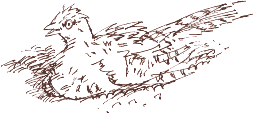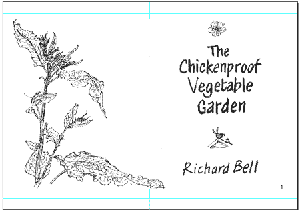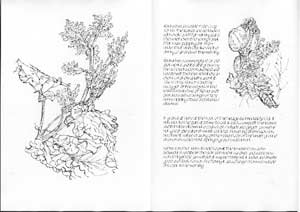|  Ten
to nine this morning: the house martins return, back
from winter in Africa, but they're not here for long; one swoops in, takes
a brief look at one of the dried-mud nest cups under the eaves of the
house across the road, and swoops off again. I don't see them again during
the day. Ten
to nine this morning: the house martins return, back
from winter in Africa, but they're not here for long; one swoops in, takes
a brief look at one of the dried-mud nest cups under the eaves of the
house across the road, and swoops off again. I don't see them again during
the day.
I've been expecting them back during the past week but each time I'd
seen a bird there it turned out to be a sparrow or a blue tit that was
investigating the guttering. When the house martins appear they're unmistakable
because that white rump shows up conspicuously against the darkness under
the eaves.
 Sun bather
Sun bather
What is that female pheasant up to? Whatever
it is I don't want her making a mess of our potato bed. I go down, expecting
her to fly off as soon as I open the back door but she stays there, hunkered
down, with a vacant, glazed expression in her eye (but then pheasants
often have a glazed expression).
I sit on the low wall of the raised bed just seven feet from her and
she still sits there in her little scrape; surely she hasn't decided to
nest there! She looks at me for a few seconds before she composes herself
and gets up and flies off down the garden.
Pheasant Health Spa
 I've
seen blackbirds do something similar: they squat
down on the lawn or a on a flower bed on a sunny day and seem to
go into a reverie. Considering the danger from passing predators
such as sparrowhawks or cats, sunbathing must be an important, or
particularly pleasurable, activity. I've
seen blackbirds do something similar: they squat
down on the lawn or a on a flower bed on a sunny day and seem to
go into a reverie. Considering the danger from passing predators
such as sparrowhawks or cats, sunbathing must be an important, or
particularly pleasurable, activity.
I think the pheasant was enjoying a combined sun and dust bath
at the same time; the fine tilth of the soil amongst her breast
feathers would help dislodge any ticks and mites than might be lurking
there while the sun on the fanned out feathers of her wings and
back would also help deter invertebrate hangers on. I guess this
is a regular dust wallow because there's a trail of debris across
the fleece in the next bed.
I spread a piece of garden netting across the bed so that our Kestrel
potatoes, which are just starting to show green shoots, can grow
unmolested.
|
|
BLOOMIN' PHEASANTS
Health Spa
-o-
Dust Therapy
Sun Therapy
The Works
(dust and sun combo)
-o-
MENU
Chef's Special
Richard's natural wild flower lawn seed mix, now being served
at the end of the garden
(it's only £3 for a miniscule packet, so you
just peck about down there and have as much as you like!)
-o-
100% organic pond water with tadpole garnish
|
|
The Chickenproof Sketchbook
 So
much for my attempts to make the potato bed pheasant-proof; we've been
back from holiday almost a week but it's only today that I've been able
to settle down to my Chickenproof Vegetable Garden sketchbook
again. So
much for my attempts to make the potato bed pheasant-proof; we've been
back from holiday almost a week but it's only today that I've been able
to settle down to my Chickenproof Vegetable Garden sketchbook
again.
In the Freehand design program I drop the drawings I've scanned
from my main 2003 sketchbook onto A4 page layouts, then print them out.
This gives me 3o or more double-page spreads, some of which work better
than others.
Although there are lots of incidents I could put in (things like the
pheasant dust-bathing) the spreads that appeal to me most are the simple
pen and ink drawings of docks (the weed on the title page rough, left)
and rhubarb.
 Room to Grow
Room to Grow
As I've said before, when you step into a garden you step into the natural
world; you leave your busy life behind you for a while and begin to tune
into the cycles of life and growth. You see new shoots, unfolding buds
and the fruits of your labours over a long period, compared with the instant
results we expect in our 'real' world.
If I crammed the book with incidents I think I would lose that feeling
of space and the organic sense of time you experience in a garden, particularly
in a vegetable garden, but I'm going to have to put some incidents in
amongst the restful contemplations of dock and rhubarb or my readers will
all have fallen asleep by page 43.
Rhubarb, rhubarb, rhubarb
Rhubarb text in my Chickenfeet typeface
|
My efforts to produce my own typeface, Chickenfeet, have
been frustrated because of the incompatibly of my old font design
program, Your Handwriting, with my current Windows
XP computer but even the rough, rudimentary typeface that I
somehow managed to produce is proving useful at this page layout
stage.
It may not be readable (left) but it does give a good
impression - in weight and rhythm - of what my final handwritten
text will look like. I find that Comic Sans (right) gives
a rather mechanical effect.
This is going to be a big difference between the book and this
online nature diary: I have far more opportunity to design the text
to fit in with the flow of the pictures and the story.
 |
Rhubarb is a trouble free crop
for us. The leaves are so loaded with oxalic acid that nothing
eats them, not even the young rabbit that I saw popping out
from under their umbrella-like shelter during a rain shower
this morning.
Rhubarb is a commonplace of old
allotments and it's still grown by the acre between Wakefield
and Leeds yet there is definitely an exotic, stately quality
about it. The frothy flowers and the swagger of the edges
of the leaves remind me of Rembrandt pen and wash drawings:
of lacy ruffs, rippling cloaks and slashed sleeves. |
The same text in Comic Sans
|
Richard Bell, richard@willowisland.co.uk
|
![]()
 So
much for my attempts to make the potato bed pheasant-proof; we've been
back from holiday almost a week but it's only today that I've been able
to settle down to my Chickenproof Vegetable Garden sketchbook
again.
So
much for my attempts to make the potato bed pheasant-proof; we've been
back from holiday almost a week but it's only today that I've been able
to settle down to my Chickenproof Vegetable Garden sketchbook
again. Room to Grow
Room to Grow